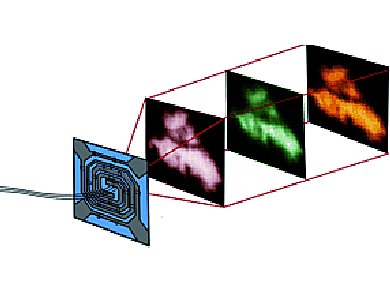In this issue, M. Schäferling reviews fluorescence imaging with chemical sensors. How can flows, temperature, or concentration gradients be visualized? In a Minireview, P. Hazarika and D. A. Russell discuss the recent advances in fingerprinting. The Highlights deal with mesoporous materials in peptidome analysis (X. C. Le et al.) and the synthesis of semiconducting polymers by arylation polycondensations (A. Marrocchi et al.).
In the Communications section, Y. Ebenstein et al. demonstrate how labeling of DNA (SMILing DNA) can create a fluorescence pattern of the T7 bacteriophage genome. L. F. Nazar et al. synthesized spherical ordered mesoporous carbon nanoparticles with very high inner porosity and used them as a cathode material in Li-S batteries. A combination of scanning transmission X-ray microscopy (see picture) and bulk methods gave B. M. Weckhuysen et al. nanoscale chemical insight in the distribution of Al and C within ZSM-5 zeolites during methanol-to-olefin reactions. J. A. Murphy found that simple organic electron donors, composed solely of carbon, hydrogen, and nitrogen reduce ground-state benzene rings to their radical anions by electron transfer upon photoactivation.



